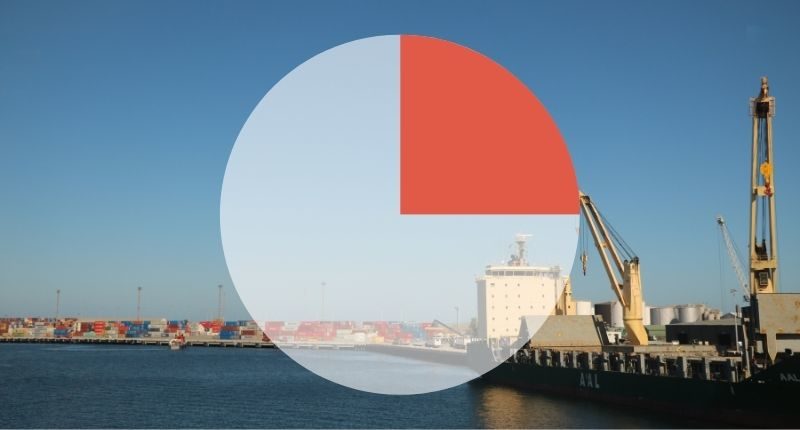- Several tailwinds are pushing up demands and land prices
- Pressure on vacancy rates at critical levels
- Investment remains strong, with a trend in portfolio acquisitions
Continuing on from the previous overview of office and industrial, the following reports on more information from Knight Frank’s Australian Industrial Review Q4 2021.
Recap
In a quick recap, the Cushman and Wakefield Marketbeat found that the quarter was the second strongest for transaction volume. The largest transaction was completed by Blackstone, the company acquired GIC’s 49% stake in Dexus Australia Logistics trust for $2.1 billion.
Dexus’ Australian Real Estate Quarterly Review Q1 2022 found that the largest growth in the industrial sector was in Sydney and Melbourne. The report also noted that the growth was due to logistics firms and retailers protecting against stock shortages by investing in more distribution space.
The latest
Tailwinds abound, the Knight Frank report found several areas are experiencing strong gusts: e-commerce, supply chains, and demand being three, land value growth rates are being buoyed by a mix of persistent shortages, high demand, and the desire for modernisation or capturing the best area for growth.
Some factors identified as being a driver behind the increased demand for industrial real estate includes the accelerated growth in e-commerce and the onshoring of manufacturing.
Key indicators Q4 2021
| Market | Prime net face rent $/sqm | Secondary net face rent $/sqm | Super* prime market yield range % | Land 5,000 sqm $/sqm | Land 1-5 ha $/sqm |
| Sydney | 162 | 138 | 3.50-4.00 | 1,739 | 1,481 |
| Brisbane | 119 | 98 | 3.90-4.40 | 437 | 372 |
| Melbourne | 105 | 86 | 3.25-3.75 | 1,008 | 842 |
| Adelaide | 101 | 76 | 4.50-5.00 | 366 | 263 |
| Perth | 99 | 73 | 4.50-5.00 | 415 | 272 |
Source: Knight Frank Research. *Yield range assumes a near new 10,000 sqm+, non-specialised, institutional high-grade industrial asset with a WALE of 7.0+ years.
The report found that online retail sales continued to play a major role in creating demand in the industrial space. This is notwithstanding the reduced spending figures recorded in December, with the report noting that data suggested Australians were likely spending prior to Christmas in order to capture the benefits of retail events such as Black Friday and Cyber Monday, demand was also likely elevated as many Australians left lockdown around October.
Knight Frank’s report said that the diversification of online retail was another factor that drove demand for warehouse and distribution assets around the country.
Overall online spending, however, remains at elevated levels, as per the below graph.

Leasing
Multiple players have been “quick to lock down warehouse and distribution space.” The report said that the demand has kept leasing activity elevated, but also created supply issues:
“… it has increased the pressure on vacancy in Q4 to the point that some markets are now facing a critical shortage of good quality product to fulfil this demand.”
Knight Frank Australian Industrial Review Q4 2021
This elevated demand continues to create “powerful tailwinds”, said the report, resulting in existing vacant space on the east coast contracting by 12%.
Amidst supply chain disruptions, many businesses have been forced to quickly adapt. That adaptation necessarily meant more warehousing or logistics space was required, the report said such demand came on more quickly than expected, and pent up demand is also increasing the level of competition for space considerably.
It was also noted that: “Secondary vacant space is now at its lowest level since 2011 and is 55% less than a year ago.”
New developments in the industrial sector are being completed at record rates. The report said the east coast can expect more than 2.7 million square metres in completions by the end of this year.
Investor activity
Industrial property continues to attract significant investment, whetting the appetites of lesser-known players in the field as well, according to Knight Frank.
Portfolio acquisitions have been a trend, and joint venture capital partnership numbers are on the rise, particularly between offshore capital and local expertise, said the report.
Last year saw investment volume estimates of over $19 billion, the figure 84% above 2020, and 134% above 2019.

Finally, the report said that yields are beginning to converge nationally, with super prime yields in Melbourne last recorded at 3.50%, Sydney 3.75%, Perth and Adelaide 4.50%, and Brisbane 4.15%.
Further compression is said to be possible given the market momentum, but there is “more potential for compression [in] Brisbane, Perth and Adelaide.”








